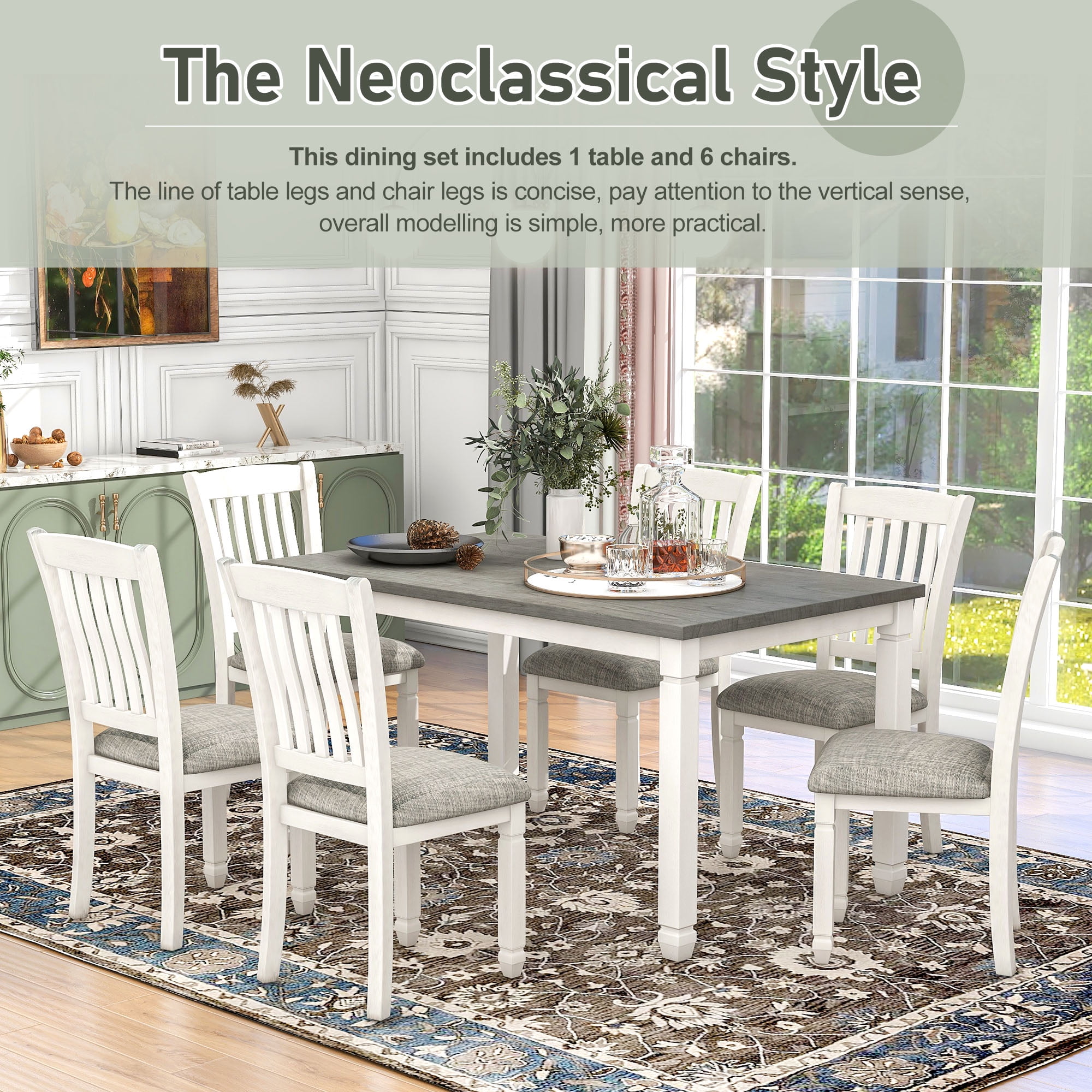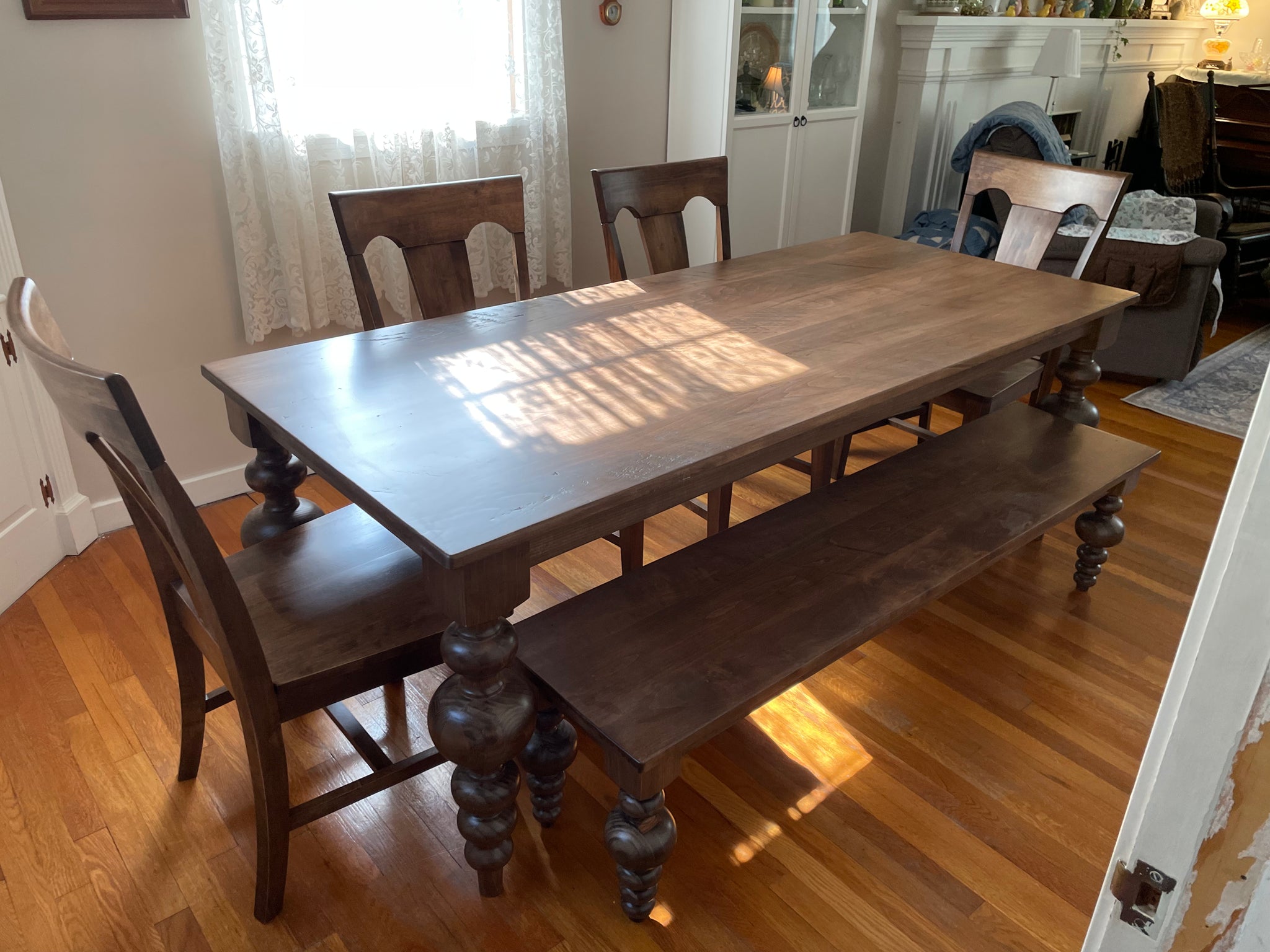The Top Trends in Dining Room Table Legs You Need to Know
The Top Trends in Dining Room Table Legs You Need to Know
Blog Article
From Standard to Modern: Discover the Ideal Dining Space Table Legs for Your Design
The option of dining-room table legs plays an essential duty in defining the total character of your space, linking the gap between traditional craftsmanship and modern aesthetic appeals. While classic designs such as cabriole and transformed legs stimulate a feeling of classic refinement, modern styles like hairpin and geometric alternatives provide an opportunity for striking visual rate of interest. Evaluating the appropriate balance between these designs calls for a nuanced understanding of your existing decoration and personal taste. As you take into consideration these elements, the question remains: how can you flawlessly incorporate these varied leg styles to produce an unified eating experience?
Recognizing Table Leg Styles
The variety of dining-room table leg styles can substantially affect both the visual appeals and performance of the area. Each leg style contributes distinct useful functions and visual components, accommodating varied layout choices and usage requirements. Comprehending these designs is crucial for selecting the best table that straightens with your overall interior style vision.
For circumstances, conical legs offer a tidy, classic appearance that can enhance a space's style, while pedestal bases provide security and make the most of legroom, making them excellent for smaller spaces. Barrette legs, a trademark of mid-century modern layout, introduce an industrial panache, enabling for an airy, open feeling. Trestle legs evoke rustic charm, giving robust support and a feeling of timelessness.
Moreover, the selection of products plays a considerable role. Wood legs can bring warmth and texture, whereas steel choices often convey a smooth, modern vibe. Eventually, understanding table leg designs is important for developing a cohesive eating location that shows individual style while making certain practicality and convenience. By attentively thinking about these components, you can enhance both the aesthetic and practical allure of your dining area.
Typical Table Leg Options
When selecting dining-room table legs, standard alternatives frequently symbolize ageless style and workmanship. These designs reflect a rich heritage and a commitment to high quality, making them excellent for those that appreciate classic appearances.
Among the most iconic conventional leg styles is the cabriole leg, defined by its stylish rounded shape. This style commonly includes attractive makings and is most generally located in Queen Anne and Chippendale furnishings. An additional preferred alternative is the turned leg, which boasts a collection of smooth, rounded forms that give a traditional look while preserving security.
Furthermore, the straight leg, while basic, uses a durable and unadorned framework that can blend effortlessly with a range of tabletop styles. For those drawn to ornate detailing, claw-and-ball feet legs stimulate a feeling of splendour and can act as a spectacular prime focus in any eating area.
Finally, pedestal bases, although not purely legs, supply an alternate conventional option that permits adequate legroom and can be magnificently carved. Each of these typical leg designs adds to the total ambiance of a dining area, marrying feature with visual appeal.

Modern Table Leg Styles
Modern table leg layouts provide a diverse series of designs that emphasize tidy lines and ingenious products. These styles often prioritize functionality while working as striking prime focus within an eating room. Minimalist aesthetics are prevalent, with legs crafted from products such as steel, glass, and engineered timber, which add to a ventilated and contemporary feel.
One preferred layout is the barrette leg, defined by its slender, conical framework that provides stability without frustrating the tabletop (dining room table legs). This style is commonly located in mid-century modern furnishings and can effortlessly match various table shapes. Another pattern is the use of geometric shapes, where legs may handle asymmetrical or angular types, adding aesthetic rate of interest and a touch of artistry

Mixing Designs for Unique Spaces
Frequently, property owners look for to create special eating rooms that reflect their individual design by blending numerous design components. This technique enables the unification of varied looks, resulting in a harmonious yet distinctive environment. Matching a rustic wood table with smooth, contemporary metal legs can produce a distinctive contrast that elevates the room's general allure.
In addition, incorporating vintage table legs with contemporary table tops can evoke a feeling of history while maintaining a modern-day perceptiveness. Such combinations not only showcase private taste however also encourage imagination, permitting property owners to curate an area that feels both personal and welcoming.
Color plays an essential duty in this mixing procedure; choosing table legs that enhance or contrast with the existing color scheme can enhance visual interest. For instance, whitewashed legs can soften the daring of a dark table surface, producing a balanced aesthetic.
Tips for Selecting the Right Legs
Selecting the right table legs is important for attaining both capability and visual appeal in your dining area. Begin by considering the total design of your space. Standard settings benefit from legs that include elaborate carvings or turned designs, while contemporary spaces might ask for sleek, minimal designs.
Following, examine the elevation and security of the legs. dining room table legs. Standard table vary between 28 why not find out more to 30 inches important link in elevation, so make certain the legs enhance this measurement for convenience. In addition, robust materials, such as hardwood or metal, can improve security and longevity
Assess the leg shape too-- alternatives include directly, tapered, or stand designs. Straight legs supply a classic look, while conical legs can include a touch of beauty. Pedestal bases offer adequate legroom and are excellent for smaller sized spaces.
Final Thought
In summary, picking the perfect eating space table legs calls for mindful consideration of both standard and modern designs. Typical options such as cabriole and turned legs supply classic beauty, while modern-day designs like hairpin and geometric shapes provide a modern touch. By harmonizing leg design, elevation, and product with the general decor, a natural and welcoming ambience can be attained. Inevitably, the selected table legs need to show the wanted visual, enhancing the eating experience within the area.
The selection of eating area table leg designs can significantly influence both the looks and functionality of the space. Eventually, comprehending table leg styles is essential for creating a cohesive dining location that mirrors individual style while guaranteeing usefulness and comfort.One of the most renowned conventional leg designs is the cabriole leg, characterized by its graceful bent shape. Straight legs use a page timeless appearance, while tapered legs can add a touch of elegance.In summary, picking the optimal eating room table legs calls for careful consideration of both contemporary and typical styles.
Report this page